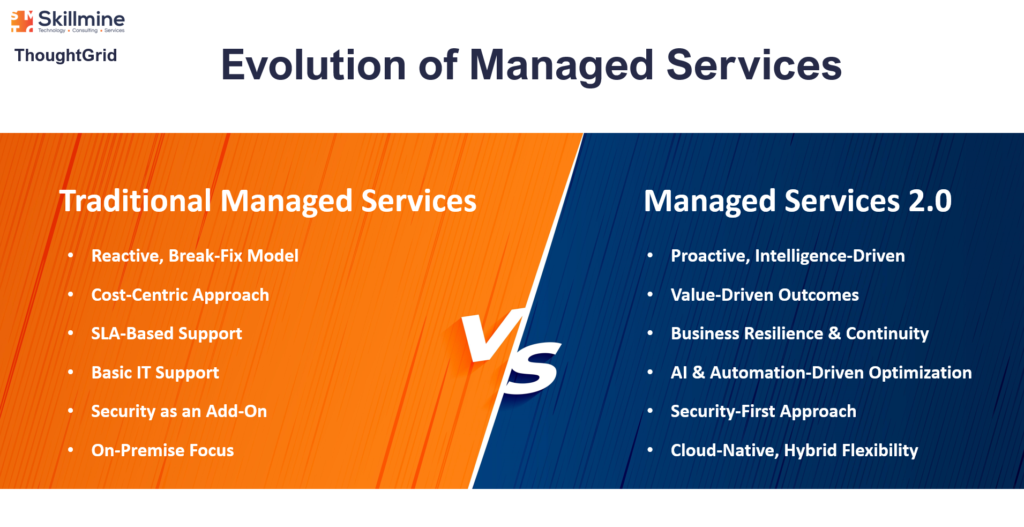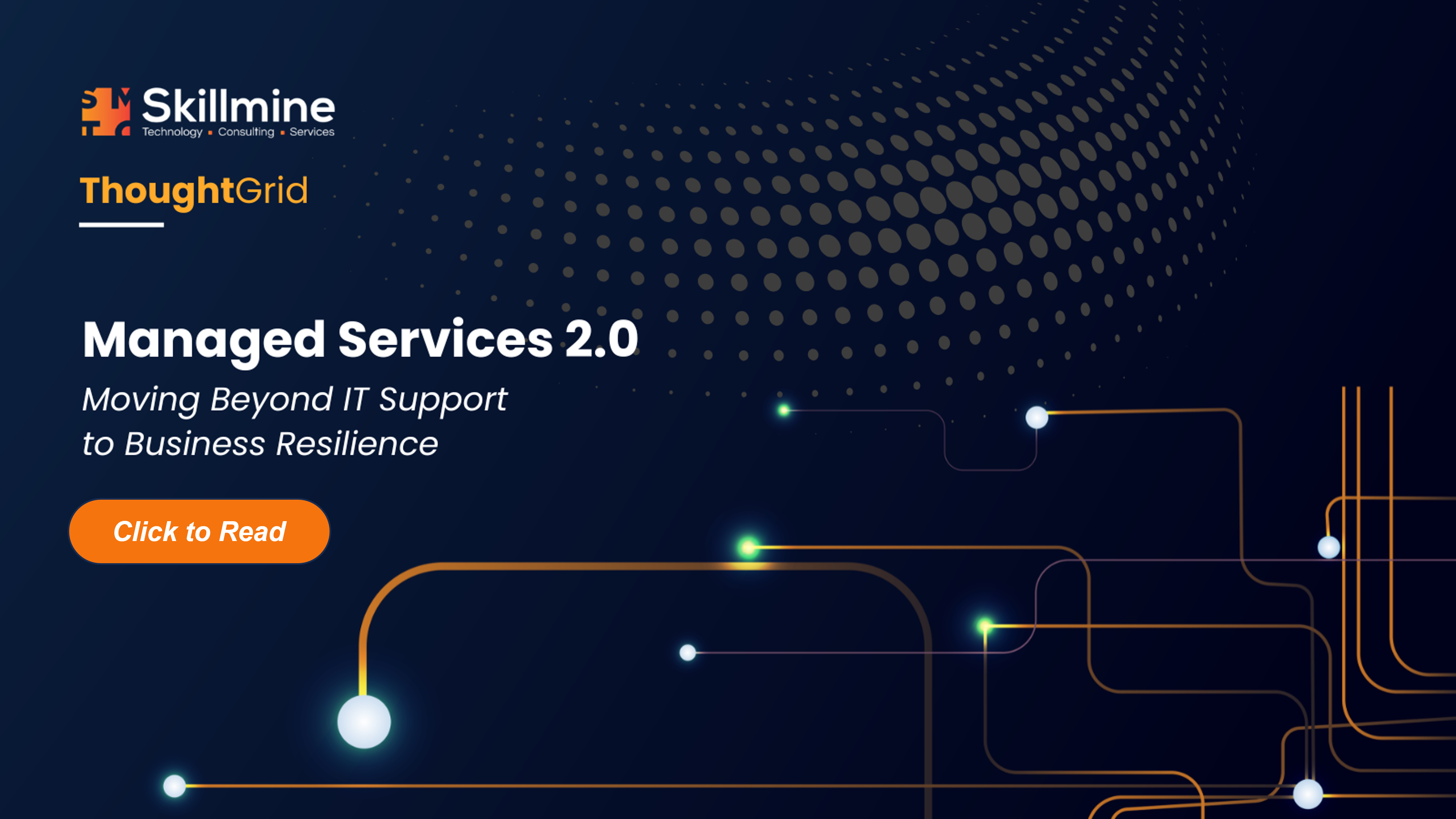For years, managed services were seen primarily as a cost-cutting tool for businesses to outsource IT functions and reduce operational expenses. But as technology landscapes evolve, so do business expectations. Today, managed services are no longer just about maintaining IT infrastructure; they enable business resilience, agility, and transformation.
The shift from reactive, break-fix models to proactive, intelligence-driven service delivery redefines the role of Managed Service Providers (MSPs). Businesses now demand more than uptime guarantees; they need strategic partnerships that align IT with business goals.
The shift from reactive, break-fix models to proactive, intelligence-driven service delivery redefines the role of Managed Service Providers (MSPs). Businesses now demand more than uptime guarantees; they need strategic partnerships that align IT with business goals.

Why Traditional Managed Services No Longer Suffice?
Legacy managed services models were designed to provide basic IT support, infrastructure maintenance, and service-level agreements (SLAs). However, in a world where organizations are dealing with hybrid cloud environments, cybersecurity threats, compliance challenges, and remote workforces, traditional approaches fall short.
Businesses today require:
Businesses today require:
- Predictive and data-driven service models that anticipate issues before they escalate.
- Stronger cybersecurity postures integrated into managed service offerings.
- Cloud-native expertise to navigate multi-cloud and hybrid environments.
- AI-driven automation to streamline IT operations and optimize costs.
The Shift Toward Outcome-Based Managed Services
Organizations are increasingly moving away from SLA-based contracts focusing purely on response times and uptime, towards value-driven engagements where MSPs deliver measurable business outcomes.
This new model includes: – Business Continuity & Resilience – Ensuring IT infrastructure supports long-term business growth – Security-First Approach – Embedding cybersecurity into managed services instead of treating it as an add-on – Automation & AI Integration – Leveraging AI-driven insights to improve efficiency and reduce human intervention – Cost Optimization & Flexibility – Providing scalable, usage-based services that adapt to business needs.
This new model includes: – Business Continuity & Resilience – Ensuring IT infrastructure supports long-term business growth – Security-First Approach – Embedding cybersecurity into managed services instead of treating it as an add-on – Automation & AI Integration – Leveraging AI-driven insights to improve efficiency and reduce human intervention – Cost Optimization & Flexibility – Providing scalable, usage-based services that adapt to business needs.
The Future of Managed Services: A Strategic Imperative
MSPs are no longer just IT service providers – they are becoming strategic partners in digital transformation. Forward-thinking businesses are embracing:
- Proactive monitoring & predictive analytics to prevent disruptions before they occur.
- Cybersecurity-driven managed services that integrate endpoint protection, identity management, and compliance.
- Cloud-native operations that optimize workloads across multi-cloud ecosystems.
- Industry-specific solutions tailored to business-critical applications and regulatory requirements.





